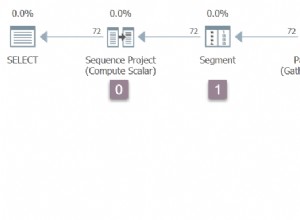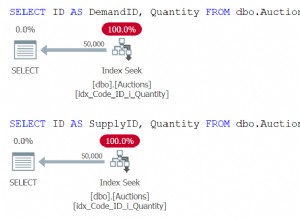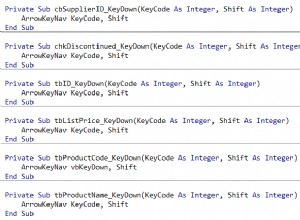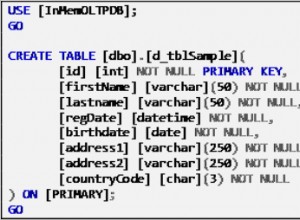Wydaje się to trochę zawiłe, więc byłbym zainteresowany ulepszeniami.
select distinct emp_id,
nvl(x_start_date,
lag(x_start_date)
over (partition by emp_id
order by rn)) as start_date,
nvl(x_end_date,
lead(x_end_date)
over (partition by emp_id
order by rn nulls first))
as end_date,
rating,
department
from (
select emp_id, start_date, end_date, rating, department,
case start_date
when lag(end_date)
over (partition by emp_id, rating, department
order by start_date) then null
else start_date end as x_start_date,
case end_date
when lead(start_date)
over (partition by emp_id, rating, department
order by start_date) then null
else end_date end as x_end_date,
rownum as rn
from table1
)
where x_start_date is not null or x_end_date is not null
order by emp_id, start_date
/
Z tymi danymi testowymi:
EMP_ID START_DA END_DATE RA DEPARTMENT SALARY
---------- -------- -------- -- -------------------- ----------
2000 01012010 01012011 A HR 9000
2000 01012011 01012012 A HR 10000
2000 01012012 01012013 A+ HR 20000
2000 01012013 01012014 A HR 20000
2000 01012014 12319999 A HR 21000
3000 01012011 01012012 B Operations 50000
3000 01012012 12319999 B Operations 60000
4000 07012011 07012012 B Operations 50000
4000 07012012 07012013 B Operations 50000
4000 07012013 12319999 B Operations 60000
Rozumiem:
EMP_ID START_DA END_DATE RA DEPARTMENT
---------- -------- -------- -- --------------------
2000 01012010 01012012 A HR
2000 01012012 01012013 A+ HR
2000 01012013 12319999 A HR
3000 01012011 12319999 B Operations
4000 07012011 12319999 B Operations
Próbowałem też z emp_id (4000 ), który miał trzy ciągłe zakresy dat i zajmował się tym OK – zewnętrznym where klauzula powoduje, że wpisy pośrednie zasadniczo znikają. Zmieniono, aby dodać :teraz działa również z dodatkowymi zakresami dat dla 2000/A , ponieważ poprawiłem kolejność w zewnętrznym lead /lag partycje.
Zapytanie wewnętrzne wymazuje wszystkie oprócz pierwszej daty rozpoczęcia i ostatniej daty zakończenia dla ciągłego bloku, a zapytanie zewnętrzne używa drugiej rundy lead i lag aby połączyć je w identyczne wiersze, które distinct następnie zapada się.
Zakładam start_date i end_date są DATE pola, a nie VARCHAR2 i masz NLS_DATE_FORMAT ustaw na MMDDYYYY . Jeśli są przechowywane jako ciągi, co jest złym pomysłem, potrzebujesz to_date() w wielu miejscach, aby zamówienie działało poprawnie.




